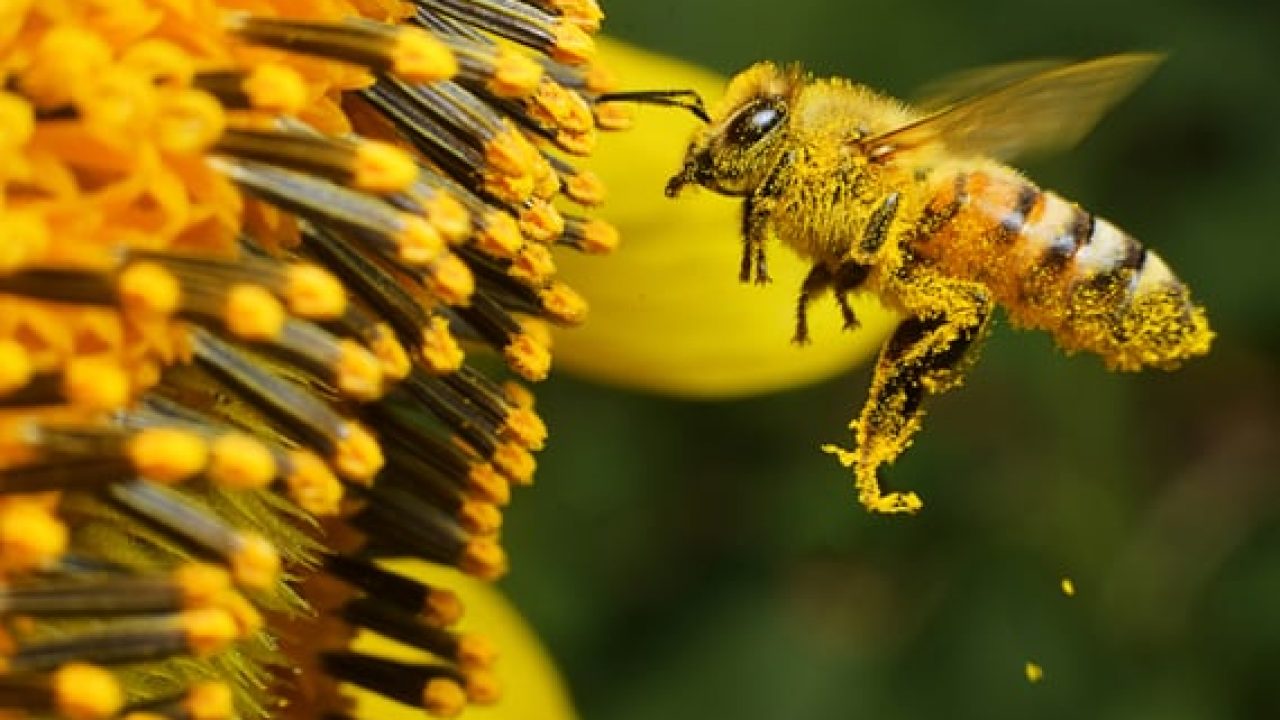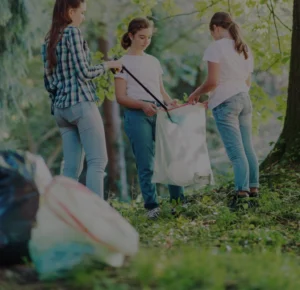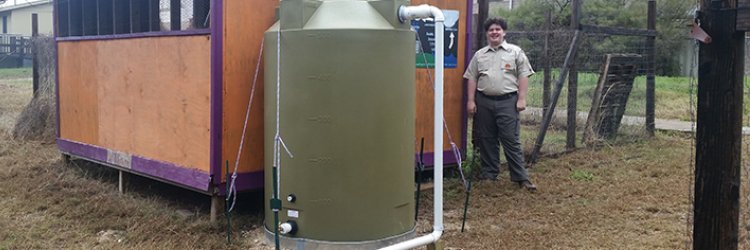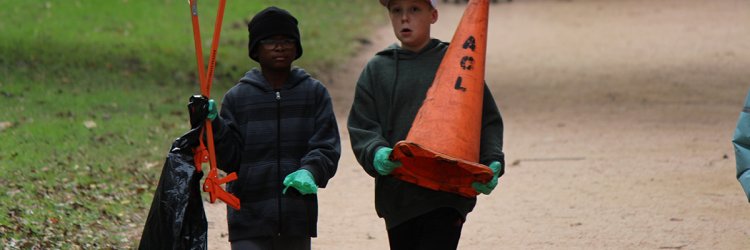Pollinator Week is here! This is a time to celebrate, recognize, and protect our Earth’s pollinators for doing an amazing job at sustaining our ecosystems and providing us goods which our lives depend on. Pollinator Week is an annual event celebrated internationally to honor pollinators, support their health, and spread information on what we can do to protect them. In 2007, Pollinator Week was initiated by Pollinator Partnership. The U.S. Senate’s unanimous approval to designate and celebrate “National Pollinator Week” signified a crucial step towards addressing the urgent issue of declining pollinator populations. We need pollinators and pollinators need us!
Who are our pollinators and what do they do?
There are many different species that are pollinators from bats, birds, bees, butterflies, beetles, moths, flies and other small mammals that are responsible for bringing us one out of every three bites of the food we eat! Pollinators sustain our ecosystems by helping plants reproduce. Pollination occurs when pollen is moved within flowers or carried from flower to flower by animals or by the wind.
Why are pollinators important?
Our native pollinators of the U.S. play a critical role in sustaining our ecosystems. It is estimated that they provide essential services at as much as $9 billion annually to American agricultures. Globally, roughly 1,000 plants grown for food, beverages, fibers, raw materials, spices, and medicines require pollination by animals including apples, blueberries, coffee, almonds, tequila and more. We depend on pollinators to produce these goods. The relationship between pollinating animals and plants is a vital interaction that allows the plants we use to successfully fertilize.

So what’s this buzz about the bees?
When we think of pollinators, our mind usually wanders to an image of bees. The honeybee tends to take the spotlight when we think of bees, but did you know honeybees are non-native species? They were brought over from Europe to use as honey producers. While the honey bees are important, research shows native bees are two to three times as effective at pollinating agricultural crops as non-native honeybees. There are over 4,000 native ground and twig nesting bees in the U.S. Some form colonies while others live and work in solitary life.
In the United States, pollination by honeybees, native bees, and other insects produce $40 billion worth of products annually. Some native bees you may spot in Austin are the bumble bee, the sweat bee, carpenter bees, leafcutter bees, mason bees, and cactus bees. The bumble bee especially loves some homegrown Texas tomatoes. More than 50 native bees are in documented decline, with nine critically imperiled, including the Franklin’s bumble bee.
Butterflies
Some butterflies of Austin include the Silver-spotted Skipper, Eastern Tiger Swallowtail, Dainty Sulphur, Reakirt’s Blue, and Pearl Crescent. Another iconic North American pollinator is the Monarch butterfly which migrates from Mexico, through Texas, up to Canada, and back.
The monarch butterfly is in severe decline. Twenty years ago there were a billion monarchs and now the population size is down to roughly 35 million. Part of the decline in monarch populations is due to nationwide habitat loss, herbicide use, and drought.
Milkweed plants are critical to the survival of monarch butterflies and many other animals. Monarchs must lay their eggs on Texas milkweeds as they migrate north through Texas in the spring which makes this particular species of milkweed essential. When those eggs hatch, the monarch caterpillars rely on the milkweed leaves and flowers as their sole food source. The Ladybird Johnson Wildflower Center’s “Project Milkweed” increased the abundance of native milkweeds by collecting and distributing seeds of native Texas milkweeds to local growers.
Planting milkweed species in your yard is one way to help the monarchs if you have the right soil conditions. Although the caterpillars rely solely on milkweed plants for nutrients, the butterflies are not picky eaters. Some of their favorite wildflowers include purple coneflower, Gregg’s mistflower and, in the fall, frostweed. You can learn more about how to recognize milkweed species and other beneficial plants for pollinators by visiting The Wildflower Center’s native plant database.

What about those furry mammals living under the Congress Avenue bridge?
 Another iconic and beloved pollinator to sight-see in Austin are the Mexican-free tailed bats. Not only are they efficient pollinators, particularly of century agave plants, but they are insectivores which keep insect populations like those of mosquitos under control. They also eat aphids and other agricultural pests, which helps farmers’ and gardener’s crops, thus reducing the need for pesticides. Fun fact: about 300 species of fruit depend on bats for pollination and/or seed dispersal!
Another iconic and beloved pollinator to sight-see in Austin are the Mexican-free tailed bats. Not only are they efficient pollinators, particularly of century agave plants, but they are insectivores which keep insect populations like those of mosquitos under control. They also eat aphids and other agricultural pests, which helps farmers’ and gardener’s crops, thus reducing the need for pesticides. Fun fact: about 300 species of fruit depend on bats for pollination and/or seed dispersal!
The underdog pollinators
Some pollinators that may not be as popular are beetles and flies. Beetles have a bad reputation because they can damage plant parts they eat, but next time you spot a Magnolia in bloom you can thank a beetle for assisting in its growth. They also help pollinate sweet shrub, paw paws and yellow pond lilies. Most people find flies quite annoying, however, they are important in pollinating small flowers that bloom under shade and seasonally moist habitats. They serve as important pollinators for a range of annual and bulbous ornamental flowers as well as other plants.
Pollinators are in trouble and need our help
Pollinating animals are suffering from a loss of habitat, chemical misuse, introduced and invasive plant and animal species, and diseases and parasites which has led to many pollinators becoming federally “listed species”. This means there is evidence of their disappearance in natural areas.
What can the average person do?
At times, the topic of pollinators declining can feel doom and gloom. You do not have to be a beekeeper to help. There are several ways to celebrate pollinators every day and get involved any way you like!
Providing plants and seeds that are safe for pollinators that have not been pretreated with systemic pesticides (systemic pesticides live in tissues of plants) is one way. Check out our blog on how to make your own seedballs to help our local pollinators!
Things you can plant:
Planting oregano, mint, lavender, and borage (bee food, deer resistant) are some easy low maintenance plants to add to your garden to help the pollinators.
For more native and helpful plant guides for the Austin area, check out these resources:
FREE Ecoregional Pollinator Planting Guides
- Install houses for bats, birds, and native bees
- Supply salt or mineral licks and water for wildlife
- Reduce pesticide and chemical use
- Substitute flower beds and herbs for lawns if possible
- Living in an apartment? Add plants to your apartment patio if possible
- Volunteer for pollinator-friendly organizations and garden groups
- Reduce your impact by buying locally produced or organic food
- Reduce, reuse, recycle
- Walk, cycle, use public transit, carpool, and telecommute
- Vote! Make your voice be heard for pollinators and conservation





